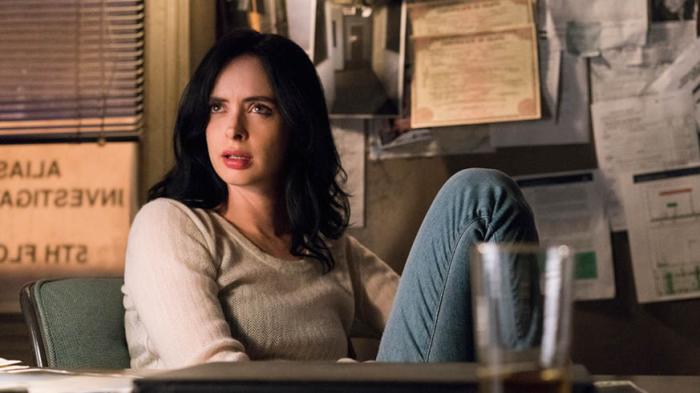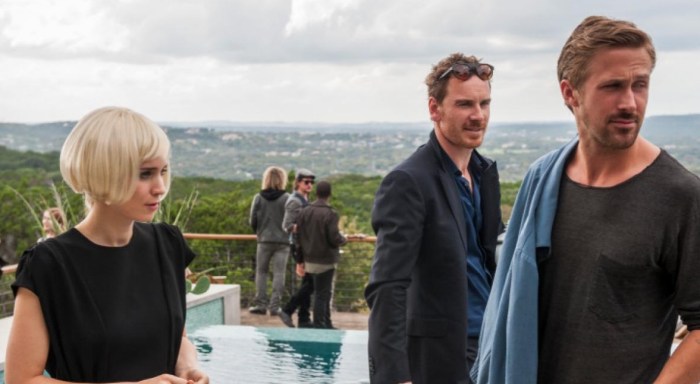‘Maps to the Stars’ On paper, pairing director David Cronenberg and writer Bruce Wagner seems counter-productive enough to work. The former has turned his attention from the horrors of the body to the brain; the latter (“Scenes from the Class Struggle in Beverly Hills”) never met a foreheading-slappingly easy Hollywood stereotype he didn’t use. Together they could create a beautiful dissonance. And at times, with “Maps to the Stars,” it seems they have. It’s rarely clear how we’re supposed to watch it. Cronenberg has said it’s not satire, and it’s definitely not funny, or scathing, or insightful, trading as it does in the most obvious jabs at la-la land. But is that, in a sense, the joke? Sort of, in a way. “Maps to the Stars” jumps around the usual tired Los Angeles types (or the ones ensconced in the biz, not the normal urbanites who live there): the discombobulating aging actress (Julianne Moore); the probably crazy out-of-towner (Mia Wasikowska); the drug-addicted teen star (Evan Bird); the predatory New Age guru (John Cusack); the clueless wannabe actor (Robert Pattinson). Everyone name-drops, because of course they do. That the teen is named Benjie is the film’s best joke. These are all beyond obvious and moldy; that Wagner and Cronenberg have been preparing this project for over a decade is only surprising in that it’s not far older. But only Cronenberg seems to be aware of this. As directed and played by a seriously committed cast, they’re weary types played wearily. Every actor acts like a pod person, who seem to have some vague notion they’re lazy inventions, barely even caricatures. This isn’t a parody of a bad Hollywood satire; it’s like an alien world that’s an antiseptic recreation of Los Angeles shot in bland digital — where even the Hollywood sign is on a tiny, disheartening molehill. It’s an impressive feat for the actors, playing this lifeless on purpose; they resemble the actors under hypnosis in Werner Herzog’s “Heart of Glass.” Only Moore goes over the top; no one else has anything resembling energy, as that’s his film’s singular vision. (As in “Cosmopolis,” Cronenberg knows how to tap into Robert Pattinson’s awkwardness for off-beat comedy, even when he’s not dressed like an alien.) It’s still not clear how we’re supposed to be taking this; it’s like anti-comedy meets anti-cinema, where the jokes are supposed to be bad and the feeling is supposed to be flat. But it’s not camp it’s something else. When relinquished from the support of horror or genre, Cronenberg makes films that aren’t only easily read, but which dare us to read in them in the least interesting ways — ones they’re not remotely interested in exploring. “Spider” looked like an obvious exploration of the Oedipal Complex; “eXistenZ” seemed like a “Matrix”-y salvo against virtual reality. Neither of those were the real way into them; they are both about shambling about through odd worlds — ones that seem familiar but are intentionally and productively off. And yet “Maps to the Stars” still might be the least fascinating film this most interesting of filmmakers has yet made. It’s not that the film’s steady, flat tone gets old; it’s just that there’s not much else to dig up after a handful of minutes. A lampoon of a Hollywood lampoon is still a Hollywood lampoon. It’s a one-trick pony that eventually tries to turn weird; Wagner allows the third act to descend into Grand Guignol murder and mayhem.Any other director would have gone full tilt boogie with this, but Cronenberg actually underplays the ultraviolence, even making an apparent joke out of one fit of monstrously unconvincing CGI — as though unconvincing cinema had invaded this unconvincing world. That’s still only moderately interesting. It’s not that the material defeats Cronenberg. It’s that maybe this experiment was only marginally worth doing. It’s a mood piece whose mood is only theoretically inviting. “Maps to the Stars” ultimately becomes one of those films where you get what it’s doing and why it’s doing it and still find it a drag.
Director: David Cronenberg
Stars: Julianne Moore, Mia Wasikowska
Rating: R
2 (out of 5) Globes
Review: ‘Maps to the Stars’ is not exactly a parody of bad Hollywood satire
Follow Matt Prigge on Twitter @mattprigge

















